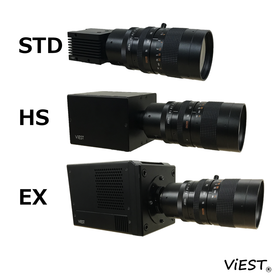High-speed line scan camera capable of outputting up to 120kHz at 16K resolution.
■Features A 16K line scan camera equipped with Gpixel's CMOS sensor GL3516. With a horizontal resolution of 16384 pixels and a 3.5×3.5µm CMOS, it can achieve a line rate of up to 120kHz, making it ideal for fields that require high-speed scanning at 16K resolution. Its compact housing design measures 77mm square and is equipped with mounting taps on the front and four sides, ensuring ease of installation regardless of position or conditions.
Inquire About This Product
basic information
■High-speed, high-resolution 16k line scan camera ■Horizontal resolution 16384 pixels × 2 lines ■Approximately 120 kHz output possible with CXP-12x4Lane connection ■Lens mount: M72 ■CXP-12×4Lane (MicroBNC connector) ■Compliant with CoaXPress 1.1 ■Mounting taps (front and 4 side surfaces)
Price range
Delivery Time
Applications/Examples of results
Semiconductor front-end/back-end visual inspection, final visual inspection of semiconductor components, visual inspection of assembled boards, various alignments, and industrial image processing focused on semiconductors and electronics.
Line up(1)
| Model number | overview |
|---|---|
| BL-GM16KD12X4 | 16K / mono / Dual / 120kHz / M72 mount / CXP-12 / MicroBNC connector |
catalog(3)
Download All CatalogsNews about this product(1)
Company information
We focus on the design, development, manufacturing, and sales of high-speed, high-resolution, and highly reliable machine vision cameras primarily using CoaXPress and CameraLink. In addition to developing standard products, we also offer development and customization tailored to customer requests. All camera design and development is carried out by our Japanese staff, ensuring design and production techniques that guarantee delicate and highly reliable standards in Japan, while integrating the dynamic action and speed of China to provide competitive products. At Japan Bopixel, we have successfully become the first camera manufacturer to utilize Ultra Low Power FPGA instead of the standard FPGA adopted by the majority of camera manufacturers. This Ultra Low Power FPGA reduces power consumption by over 50% compared to similar class FPGAs, significantly lowering power consumption and heat generation in cameras by addressing the heat source at its root. By actively adopting these next-generation key devices, we are taking a new approach to the heat generation issues that have traditionally been a challenge.
















